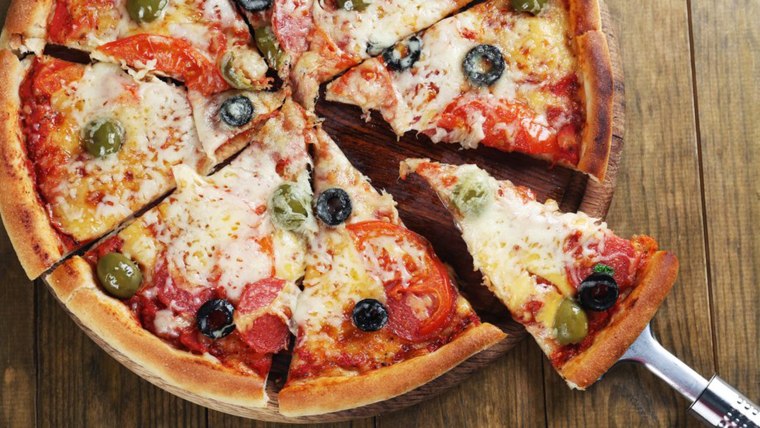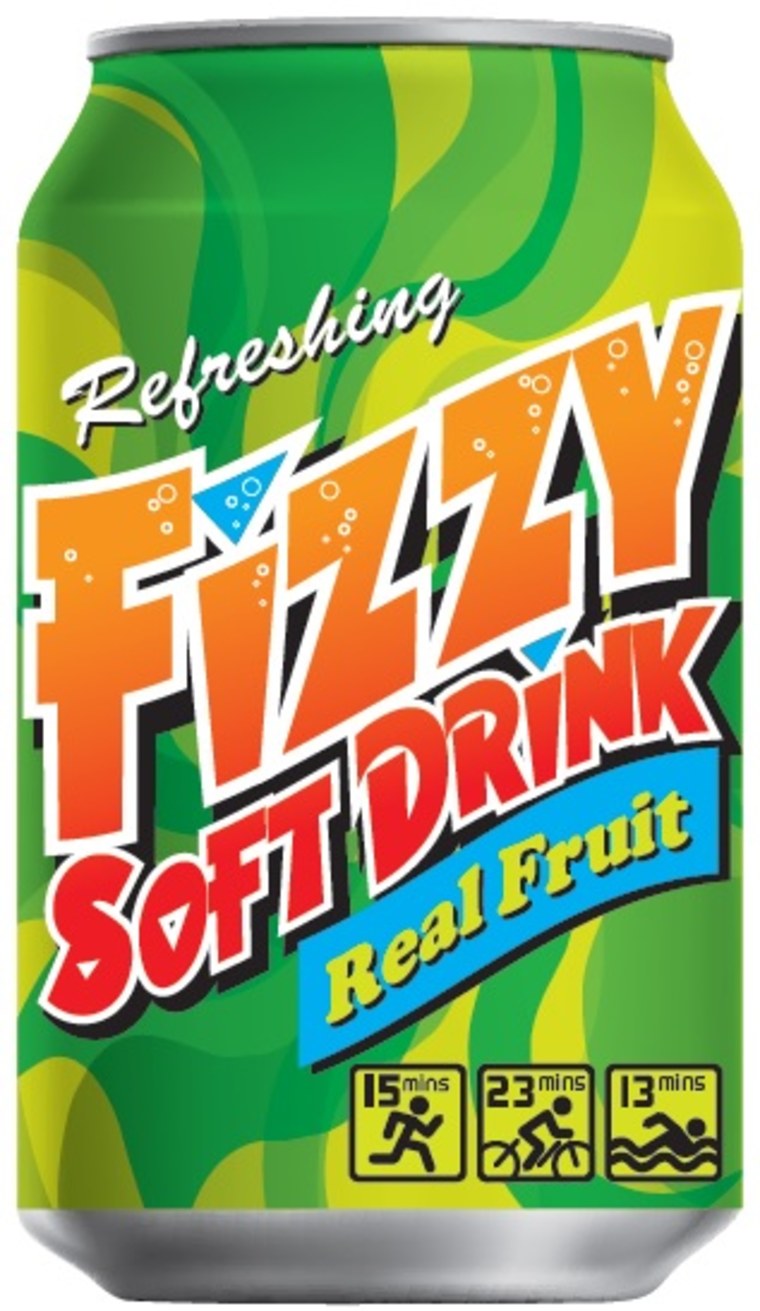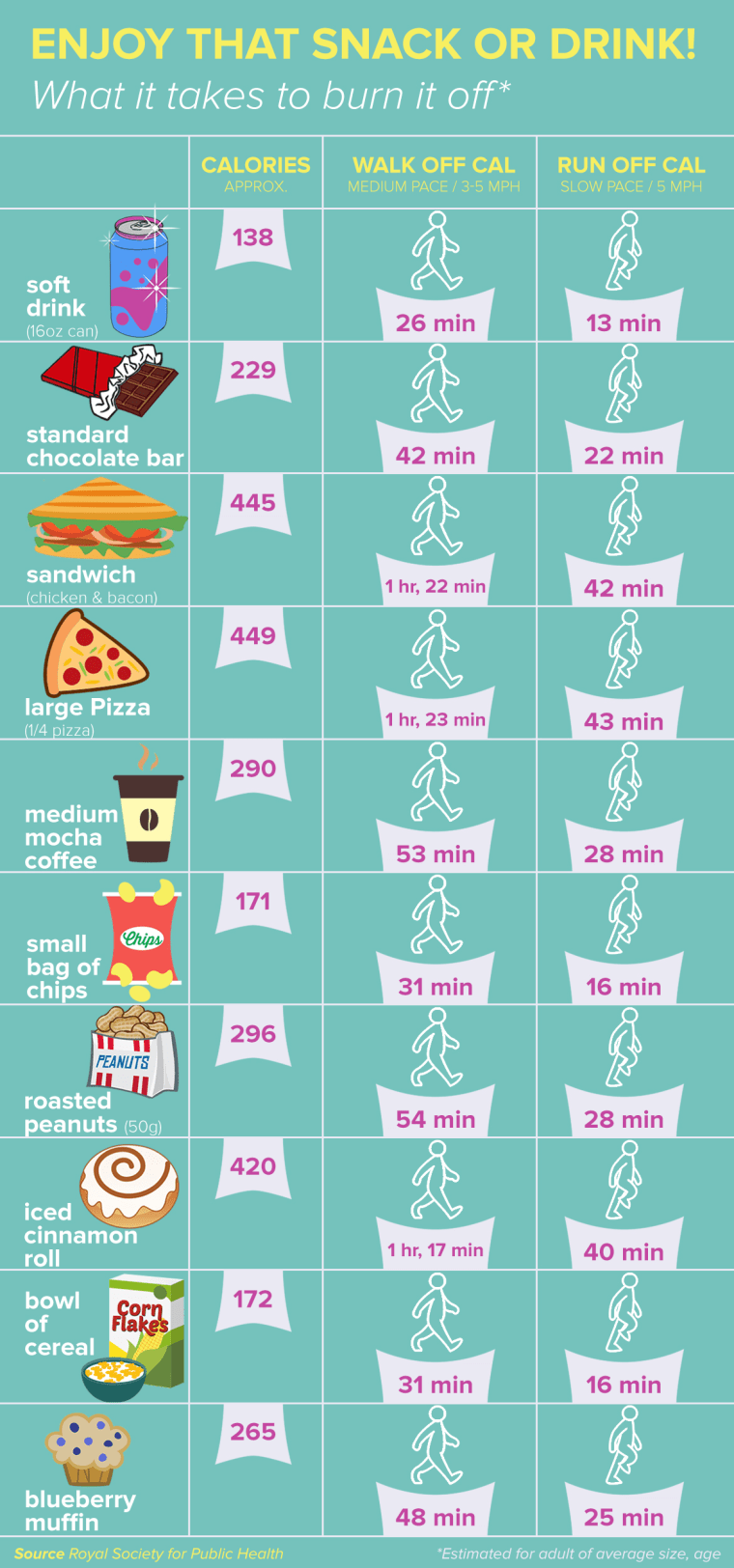If you knew you’d have to work out for an hour after eating 2 slices of pizza, would you still chow down? British researchers think you wouldn’t. Since calorie counts on food packaging haven’t stopped us from getting fatter, they’re proposing exercise labels on food packages like chocolate, soda and chips.
Just like Americans, the British are struggling with an epidemic of obesity and overweight — and the disease that go along with that, such as diabetes, heart disease and cancer.

Food labels aim to help people decide what to eat. But Shirley Cramer, chief executive of the Royal Society for Public Health, says they could do a lot more.
How about a picture of someone exercising away the calories in a chocolate bar, she suggests.

“People find symbols much easier to understand than numerical information, and activity equivalent calorie labels are easy to understand, particularly for lower socioeconomic groups who often lack nutritional knowledge and health literacy,” Cramer wrote in a commentary in the British Medical Journal published Wednesday.
“For example, the calories in a can of fizzy drink take a person of average age and weight about 26 minutes to walk off.”

The idea is to have a picture that shows this. “So for example if it was a can of soda, you would have a pictorial of a stick man running and it would say 26 minutes, or you would have walking 40 minutes or you would have swimming,” Cramer told NBC News.
British food labels are regulated by European authorities. In the U.S. the Food and Drug Administration helps regulate food labels, which currently must tell people how many calories a product delivers, and break that down into calories from fat, saturated fat, protein, sugars and so on.
It takes years of consultation to change these labels. Right now, FDA is working on a rule that would require that food labels not only say how much sugar is in a product, but what percentage the sugar adds to the daily recommended intake.
Cramer says pictures would sound less bossy. “The public is used to being told to avoid particular drinks and to cut down on specific foods. By contrast, activity labeling encourages people to start something, rather than calling for them to stop,” she said.
Susan Roberts, a senior scientist at Tufts University, calls it a “ridiculous idea.”
“I don’t think food labels will fundamentally solve our problem,” she told NBC News.
“This kind of thing should be squashed. The problem with weight control is that exercise isn’t always the solution. Exercise makes people hungry, so it makes people eat more. The focus should be on eating healthier foods that keep you full longer.”
Related: What's 'moderation' anyway? 6 tips for enjoying chocolate, cheese and wine!
The food and beverage industry have for years argued that exercise is at least as important as food in controlling weight. Roberts, who studies energy metabolism, disagrees.
“Strategies like this that focus on exercise are very counterproductive,” she said.
“You can’t get a regular human to do more than 20 to 30 minutes of exercise a day. If you label the food, it’d have you doing four to six hours of exercise a day… so ridiculous. Everyone would ignore it anyway.”
Bust David Just, who studies how psychology and economics drives human behavior at Cornell University, thinks it might work.
“The labels that we have currently tend to tell us things like number of calories and grams of fat and things like that- it's stuff that is very hard for the average consumer to really understand and make use of,” Just said.
And it only takes a little bit of indulgence to pile on the pounds.
“It only takes something like a 50 calorie difference a day over the course of a year to add up to several pounds,” Just said. “So if we make small changes daily, we can end up having a cumulative effect but it takes a long time.”
If a little exercise reminder helps people remember what that smear of extra mayonnaise means, Just asks, why not give them the tool?
Related: This may be the easiest, healthiest way to cut 205 calories a day
Cramer says that is just what she is suggesting.
“People can’t out-run a bad diet, and messages about the importance of healthy and varied eating must also continue,” she wrote.
Plus, she said, people like the idea.
“We asked the population — 'well what do you think, do you think this is a good idea,' and 60 percent of them told us that they thought this would help to change their behavior,” she said.
“And you might want to make a different decision, you might have the smaller bar of chocolate, you might have the smaller muffin, you might decide to have a banana instead. So it's about giving people immediate and quick information that everybody can use.”